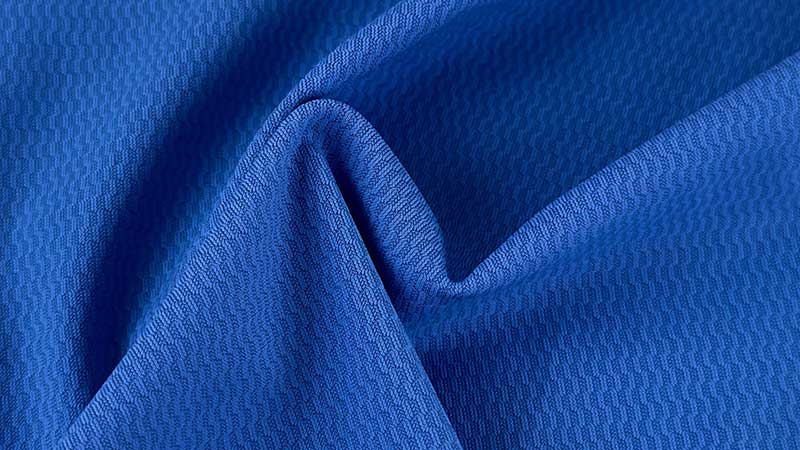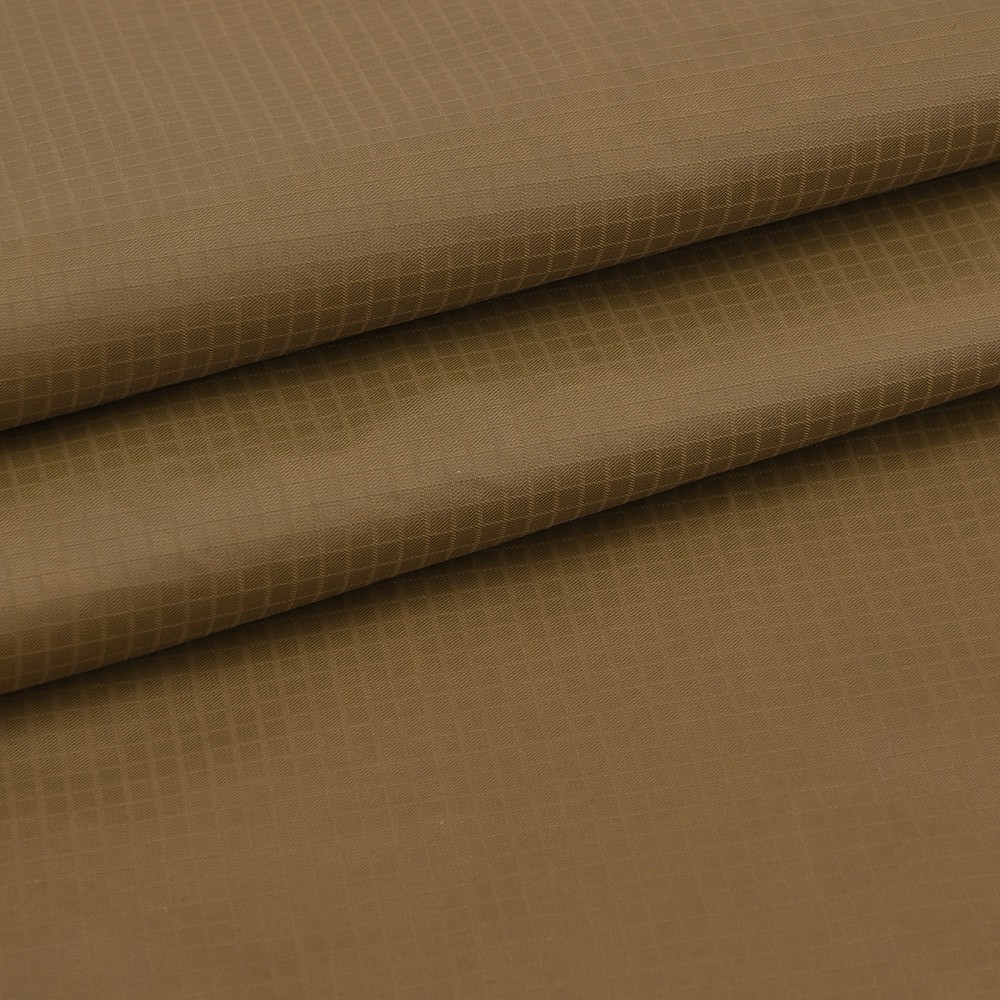A Complete Guide to Nylon Fabrics Selection

Introduction
Nylon fabric is one of the most versatile and widely used materials in the textile industry. Known for its exceptional durability, lightweight properties, and ability to adapt, nylon meets the demands of various applications, including fashion, outdoor gear, and industrial use. However, with so many types of nylon cloth available, choosing the perfect one for your specific needs can feel overwhelming.
This guide is here to simplify the process while providing the essential information to help you make an informed decision. Whether you’re selecting nylon fabric for a stylish jacket or industrial equipment, this complete guide will walk you through every key aspect to consider.
What is Nylon Fabric and Nylon Fibers?

Nylon fabric is a synthetic polymer made from petrochemicals through a process called polymerization. It was first developed in the 1930s by DuPont and introduced as a revolutionary replacement for silk. Key characteristics of nylon fabric include its strength, elasticity, water resistance, lightweight feel, and resilience. Nylon fibers are particularly valued in textile applications for their durability and resistance to wear.
Due to its distinctive composition, nylon quickly gained popularity in industries ranging from apparel to parachute manufacturing during World War II. Notably, nylon stockings became a popular substitute for silk stockings during and after the war, leading to increased production and widespread use. Its legacy continues today, thanks to its versatility and adaptability across a variety of applications.
Click here to Learn the Differences between Nylon and Polyester Fabric
Types of Nylon Fabrics: Which One is Right for You?

Choosing the right nylon starts with understanding its variations. Here are the main types to consider based on your needs:
-
Nylon 6 vs. Nylon 66:
-
Nylon 6 offers good elasticity and is softer, making it suitable for clothing and carpets.
-
Nylon 66 is more rigid and heat-resistant, ideal for industrial and outdoor applications, such as ropes and seat belts.
-
-
Ripstop Nylon: This strong fabric is woven with a crosshatch pattern, making it highly resistant to tearing. It’s perfect for outdoor gear like tents, backpacks, and hammocks.
-
Microfiber Nylon: Known for its soft texture and water resistance, this fabric is popularly used in activewear and performance apparel.
-
Nylon Mesh: Lightweight and breathable, this is ideal for sportswear, vests, and performance applications where airflow is vital.
-
Other Variations: Specialty nylon fabrics, such as elastane nylon ,ballistic nylon for heavy-duty applications like luggage and protective gear.
Understanding the Durability of Nylon Fabric
One of nylon’s strongest appeals is its durability. Nylon fabric is designed to withstand abrasion, tearing, and stretching, making it one of the most long-lasting materials available. Additionally, its durable water repellent properties enhance its suitability for outdoor and demanding applications such as luggage, tents, and protective covers.
-
Its abrasion resistance makes it suitable for heavy-use products like outdoor equipment and protective clothing.
-
Nylon’s tear strength ensures it won’t easily rip or fray under pressure.
-
Products made from nylon retain their shape and functionality for long-term use across diverse climates and environments.
For outdoor enthusiasts or industries requiring reliable materials, nylon is a top choice for its outstanding longevity.
Consider the Fabric Weight, Thickness, Handfeel, Water Resistance, Breathability
The weight and thickness of nylon, a synthetic material recognized for its strength, elasticity, and resistance to various types of damage, influence its performance and ideal application. Understanding this factor will ensure that you select a fabric that feels right and performs optimally.
Fabric Weight (GSM or Denier)
Lightweight Nylon Fabric:
-
GSM (Grams per Square Meter): Generally less than 100 GSM.
-
Denier: Usually lower, typically ranging from 30 to 70 denier.
-
Feel: Light, soft, and often translucent or semi-transparent.
-
Common Use: Ideal for applications requiring a lightweight, breathable fabric, such as sportswear, rain jackets, travel gear, and inner linings of garments.
-
GSM: Typically over 200 GSM.
-
Denier: Higher denier, ranging from 100 to 600 denier or even more.
-
Feel: Thicker, more rigid, and stronger.
-
Common Use: Suitable for heavy-duty applications like backpacks, outdoor tents, workwear, upholstery, and industrial products that need strength and durability.
Thickness and Feel
Lightweight Nylon:
-
Often feels thin and smooth to the touch, and can be quite flexible.
-
Has a soft drape and can easily be folded.
-
Not as resistant to abrasion, making it less suitable for rough use.
Heavyweight Nylon:
-
Feels thicker, more structured, and stiffer.
-
More resistant to abrasion and tears.
-
Often retains its shape better and provides more support, which is ideal for sturdy items like bags or outdoor gear.
Always match the fabric’s weight to your specific project to strike the right balance between comfort and functionality.
Durable Water Repellent

-
Lightweight Nylon:
-
Often water-resistant but generally not waterproof.
-
May be treated with durable water repellent (DWR) coatings to improve its resistance to water but not as suitable for long-term exposure to rain or water immersion.
-
Heavyweight Nylon:
-
More likely to be waterproof or water-resistant by default, especially when treated with additional coatings or laminations.
-
Often used for outdoor gear such as tents, tarps, and jackets, which need to withstand heavy rain or wet conditions.
Breathability
-
Lightweight Nylon:
-
Often more breathable, which is ideal for use in activewear like sports jackets, running clothes, or inner linings.
-
Less bulky, which enhances comfort during physical activity.
-
-
Heavyweight Nylon:
-
Less breathable due to its thicker structure, which can trap heat and moisture.
-
Best suited for products where breathability is not a primary concern, like backpacks or tents.
-
Uses of Nylon Fabric
Nylon fabric is a versatile material with a wide range of applications, thanks to its unique combination of strength, durability, and resistance to abrasion and chemicals. Here are some of the most common uses of nylon fabric:
-
Outdoor Gear: Nylon fabric is a staple in the production of outdoor gear, such as backpacks, tents, sleeping bags, and camping equipment. Its water-resistant and durable properties make it an excellent choice for withstanding harsh weather conditions and rugged terrains. Whether you’re hiking, camping, or exploring the great outdoors, nylon ensures your gear remains reliable and long-lasting.
-
Textile Industry: In the textile industry, nylon fabric is used to produce clothing, upholstery, and other textile applications. Its moisture-wicking properties make it an excellent choice for activewear and sportswear, keeping athletes dry and comfortable during intense activities. Additionally, nylon’s resilience and easy-care nature make it a popular choice for everyday apparel and home furnishings.
-
Duffel Bags and Luggage: Nylon fabric is often used in the production of duffel bags, luggage, and travel accessories. Its strength and durability make it an excellent choice for withstanding the rigors of travel. Whether you’re packing for a weekend getaway or a long-haul flight, nylon ensures your bags can handle the journey.
-
Tire Cords and Industrial Applications: Nylon fabric plays a crucial role in the production of tire cords, conveyor belts, and other industrial applications. Its high strength and resistance to abrasion make it an ideal choice for these demanding uses. Nylon’s ability to maintain its integrity under stress ensures the safety and efficiency of industrial operations.
-
Hair Combs and Accessories: Nylon fabric is sometimes used in the production of hair combs, hair ties, and other hair accessories. Its smooth surface and flexibility make it an excellent choice for these applications, providing gentle and effective grooming tools that are easy to use and maintain.
Nylon Fabrics for Outdoor Gear and Specific Applications
Fashion and Activewear: Nylon is a go-to material for outerwear, leggings, and sportswear due to its lightweight and moisture-wicking properties. It’s also valued for its ability to dry quickly, making it perfect for swimmers and athletes.
Outdoor Gear: From hiking backpacks to waterproof tents, nylon’s tear resistance, water repellence, and lightweight nature make it indispensable for outdoor adventures.
Industrial Use: Nylon cloth is commonly used in automotive applications like seat belts and airbags, as well as surgical sutures in the medical field.
Home Upholstery: Stain-resistant and durable, nylon upholstered furniture and interior fabrics hold up well to daily wear and tear.
Performance Features to Look for in Nylon Fabric
When selecting nylon fabric, consider these performance-oriented features:
-
Water Resistance: Many nylon fabrics have coatings or finishes to repel water, making them ideal for rain gear or outdoor goods.
-
UV Protection: Nylon treated with UV blockers offers essential protection for outdoor applications like awnings or adventure apparel.
-
Breathability: Moisture-wicking nylon fabrics help keep you dry and comfortable, especially for activewear.
Sustainability of Nylon Cloth: What to Consider
Traditional nylon has environmental drawbacks, primarily due to its reliance on petrochemicals and non-biodegradable nature. The manufacturing process of nylon fabric is complex and involves significant energy consumption, waste production, and the release of harmful substances, contributing to its environmental impact. However, innovative solutions like recycled nylon, such as Econyl, are gaining momentum by repurposing waste materials into high-quality fabric.
Choosing sustainable nylon options not only reduces environmental impact but also supports global recycling efforts.
Working with Nylon Fabric
Working with nylon fabric can be challenging, but with the right techniques and tools, it can be a rewarding experience. Here are some tips for working with nylon fabric:
-
Choose the Right Needle: When sewing with nylon fabric, it’s essential to choose the right needle. A sharp, heavy-duty needle is recommended to prevent breakage and ensure smooth stitching. This helps in maintaining the integrity of the fabric and achieving professional results.
-
Use the Right Thread: Nylon thread or a thicker polyester thread is recommended for sewing with nylon fabric. This will help prevent breakage and ensure a strong stitch. Using the appropriate thread ensures that your seams are durable and can withstand the stress of use.
-
Cut Carefully: Nylon fabric can be prone to fraying, so it’s essential to cut carefully using sharp scissors or a rotary cutter. Precise cutting helps in maintaining clean edges and reduces the risk of fraying, which can compromise the quality of your project.
-
Use a Walking Foot: A walking foot can be helpful when sewing with nylon fabric, as it helps to guide the fabric smoothly and prevent bunching. This tool ensures even feeding of the fabric layers, resulting in neat and consistent stitches.
-
Press Carefully: Nylon fabric can be prone to melting, so it’s essential to press carefully using a low heat setting and a pressing cloth. This prevents damage to the fabric and maintains its appearance and functionality.
By following these tips and techniques, you can work successfully with nylon fabric and create a wide range of products, from outdoor gear to textile applications. Whether you’re crafting a new piece of activewear or sewing a durable backpack, these guidelines will help you achieve the best results.
Care and Maintenance of Nylon Fabrics
Nylon is low-maintenance, but following these care tips will extend its lifespan and appearance:
-
Washing: Use cold or warm water on a delicate cycle. Avoid bleach or harsh chemicals.
-
Drying: Air drying is best. If machine drying, use a low-heat setting to avoid melting or shrinking.
-
Storage: Fold or hang nylon away from sunlight to prevent fading.
Avoid ironing directly on nylon, as its synthetic fibers can melt at high temperatures.
How to Choose the Right Nylon Fabric for Your Project
Selecting the right nylon fabric involves considering several factors to ensure it meets your needs:
-
Purpose: Determine whether you need lightweight, durable, water-resistant, or breathable fabric.
-
Weight: Choose based on whether you need thin and flexible or thick and heavy-duty nylon.
-
Finish: Look for special coatings or treatments (e.g., UV protection or water repellence).
-
Eco-friendliness: Opt for recycled nylon to support sustainability, as traditional nylon textiles are non-biodegradable and contribute to pollution despite their industrial applications in products like conveyor belts and safety harnesses.
Make an Informed Choice
Nylon fabric offers unmatched versatility, durability, and adaptability for a wide range of uses—from fashion to industrial applications. By understanding its types, weights, and performance features, you can confidently select the best nylon cloth for your needs.
If you’re ready to explore the endless possibilities of nylon fabric for your next project, browse our premium selection today or contact our team for personalized assistance.
Resources Page
- Polyester Nylon Blend Fabric for Sportswear
- What is Nylon Sport Fabric and Why is it Good for Activewear?
- Understanding Silk Nylon Fabric
- All About Nylon Bag Fabric
- Forest Green Ripstop Nylon: A Must Have for Versatile Uses
- The Ultimate Guide to Choosing Light Nylon Fabric
- Is Nylon Upholstery Fabric Good?
- Fabric Ripstop Nylon: Everything You Need to Know
